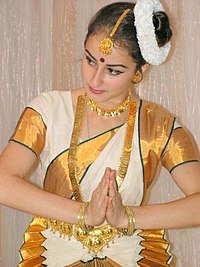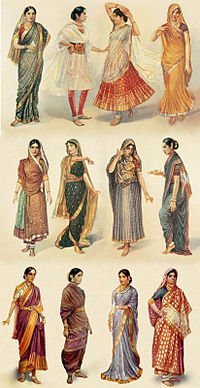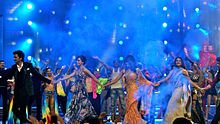culture of india
The culture of India refers collectively to the thousands of distinct and unique cultures of all religions and communities present in India. India's languages, religions, dance, music, architecture, food, and customs differs from place to place within the country. The Indian culture, often labeled as an amalgamation of several cultures, spans across the Indian subcontinent and has been influenced by a history that is several millenniums old.Many elements of India's diverse cultures, such as Indian religions, Indian philosophy and Indian cuisine, have a profound impact across the world.*
Greetings*

Greetings include Namaste (Hindi and Sanskrit), Namaskar (Hindi), Juhar/Namaskar in Odia, Namaskar (Marathi), Namaskara (Kannada), Namaskaram (Telugu, Malayalam), Vanakkam (Tamil), Nomoshkaar (Bengali), Nomoskar (Assamese). All these are common spoken greetings or salutations when people meet, and are forms of farewell when they depart. Namaskar is considered slightly more formal than Namaste but both express deep respect. Namaskar is commonly used in India and Nepal by Hindus, Jains and Buddhists, and many continue to use this outside the Indian subcontinent. In Indian and Nepali culture, the word is spoken at the beginning of written or verbal communication. However, the same hands folded gesture may be made wordlessly or said without the folded hand gesture. The word is derived from Sanskrit (namah): to bow, reverential salutation, and respect, and (te): "to you". Taken literally, it means "I bow to you". In Hinduism it means "I bow to the divine in you." In most Indian families, younger men and women are taught to seek the blessing of their elders by reverentially bowing to their elders. This custom is known as Pranāma.
Other greetings include Jai Jagannath (used in Odia) Ami Aschi (used in Bengali), Jai Shri Krishna (in Gujarati and the Braj Bhasha and Rajasthani dialects of Hindi), Ram Ram/(Jai) Sita Ram ji (Awadhi and Bhojpuri dialects of Hindi and other Bihari dialects), and Sat Sri Akal (Punjabi; used by followers of Sikhism), As-salamu alaykum (Urdu; used by follower of Islam), Jai Jinendra (a common greeting used by followers of Jainism), Namo Buddha (used by followers of Buddhism), Allah Abho (used by followers of Bahá'í), Shalom aleichem (used by followers of Judaism), Hamazor Hama Ashobed (used by followers of Zoroastrianism), Sahebji (Persian and Gujarati; used by the Parsi people), Dorood (Persian and Guarati; used by the Irani people), Om Namah Shivaya/Jai Bholenath (used in Dogri and Kashmiri, also used in the city of Varanasi), Jai Ambe Maa/Jai Mata di (used in Eastern India), Jai Ganapati Bapa (used in Marathi and Konkani), and etc.
These traditional forms of greeting may be absent in the world of business and in India's urban environment, where a handshake is a common form of greeting.
Clothing

Traditional clothing in India greatly varies across different parts of the country and is influenced by local culture, geography, climate and rural/urban settings. Popular styles of dress include draped garments such as sari for women and dhoti or lungi or panche (in Kannada) for men. Stitched clothes are also popular such as churidar or salwar-kameez for women, with dupatta (long scarf) thrown over shoulder completing the outfit. Salwar is often loose fitting, while churidar is a tighter cut.
Indian women perfect their sense of charm and fashion with make up and ornaments. Bindi, mehendi, earrings, bangles and other jewelry are common. On special occasions, such as marriage ceremonies and festivals, women may wear cheerful colours with various ornaments made with gold, silver or other regional stones and gems. Bindi is often an essential part of a Hindu woman's make up. Worn on their forehead, some consider the bindi as an auspicious mark. Traditionally, the red bindi was worn only by married Hindu women, and coloured bindi was worn by single women, but now all colours and glitter has become a part of women's fashion. Some women wear sindoor – a traditional red or orange-red powder (vermilion) in the parting of their hair (locally called mang). Sindoor is the traditional mark of a married woman for Hindus. Single Hindu women do not wear sindoor; neither do over 1 million Indian women from religions other than Hindu and agnostics/atheists who may be married. The make up and clothing styles differ regionally between the Hindu groups, and also by climate or religion, with Christians preferring Western and Muslim preferring the Arabic styles. For men, stitched versions include kurta-pyjama and European-style trousers and shirts. In urban and semi-urban centres, men and women of all religious backgrounds, can often be seen in jeans, trousers, shirts, suits, kurtas and variety of other fashions.
Popular media

Indian television started off in 1959 in New Delhi with tests for educational telecasts. Indian small screen programming started off in the mid-1970s. At that time there was only one national channel Doordarshan, which was government owned. 1982 saw revolution in TV programming in India, with the New Delhi Asian games, India saw the colour version of TV, that year. The Ramayana and Mahabharat were some among the popular television series produced. By the late 1980s more and more people started to own television sets. Though there was a single channel, television programming had reached saturation. Hence the government opened up another channel which had part national programming and part regional. This channel was known as DD 2 later DD Metro. Both channels were broadcast terrestrially.
In certain Indian cultures, Jagaran (or Jagara) is the act of intentionally staying awake
Congratulations @mohammad786! You received a personal award!
Click here to view your Board
Do not miss the last post from @steemitboard:
Congratulations @mohammad786! You received a personal award!
You can view your badges on your Steem Board and compare to others on the Steem Ranking
Vote for @Steemitboard as a witness to get one more award and increased upvotes!